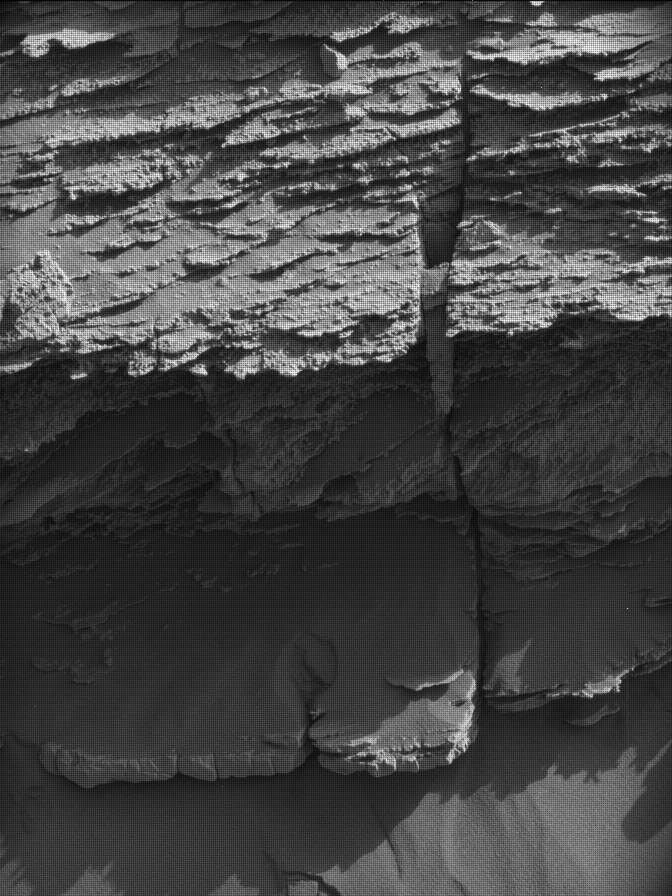The weekend activities at the “Glasgow” drill site proceeded smoothly, particularly delivery of Glasgow drill sample to CheMin, and CheMin's first analysis of the sample. That meant we were clear to move forward with the next step of drill sample analysis - preparing SAM to analyze the gases that bake off of the Glasgow sample. Even with the SAM preparatory activities, we had enough power and time in the plan to continue a wide imaging and chemistry survey of our surroundings. ChemCam will once again target the interior of the Glasgow drill hole, this time using a slightly different raster shape than the weekend analysis in order to hit different parts of the drill hole wall. Much of the bedrock around us is dotted with the gray, resistant bumps seen in the above ChemCam RMI image of the target "Loch Olabhat,” which was analyzed over the weekend. ChemCam appeared to detect differences in chemistry between the gray bumps in this target and their host bedrock. Thus, ChemCam will again target Loch Olabhat to investigate these apparent differences further. Another nearby target, “Bishops Loch,” which also has a mix of the layered bedrock and gray bumps seen in Loch Olabhat, will also serve as a ChemCam target in order to increase our understanding of chemistry differences throughout the bedrock.
Mastcam planned two large mosaics off the starboard side of the rover that cover the mid-ground between us, the base of "Tower Butte,” and the base of the slope up to the “Greenheugh” pediment. This zone of terrain gives us a more detailed view of the transition from the bedrock we are drilling now and the pediment cap rock we recently drilled at “Edinburgh.” A particular section of the slope up to the Greenheugh pediment exposes bedrock that could be related to yet another one of our recent drill holes, “Hutton” (wow, we have been busy!). To get a closer look, ChemCam planned a 10 frame RMI mosaic across this outcrop, named “Grimbister.”
Environmental monitoring continues as per usual, with Mastcam and Navcam imaging the sky and the rover deck for changes brought about by the changing seasons. Navcam will also acquire a movie looking for dust devils. REMS, RAD, and DAN will keep their regular watch over weather conditions, radiation environment, and the ground under the rover, respectively, throughout the plan.
Written by Michelle Minitti, Planetary Geologist at Framework




































